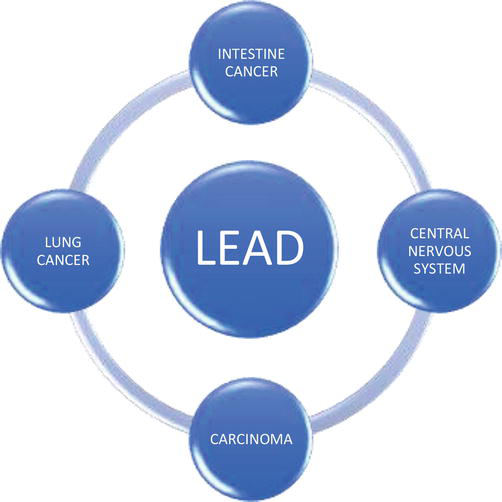
Detecting Heavy Metal Toxicity Naturally in Nevada
Nevada is known for its stunning landscapes, rich history, and vibrant culture. However, beneath its beauty lies a potential risk to public health: heavy metal toxicity. Many residents and visitors may be unaware of the dangers posed by heavy metals in the environment, particularly in areas with mining activities and industrial pollution. Understanding how to detect heavy metal toxicity naturally can empower individuals and communities to safeguard their health and well-being.
Understanding Heavy Metal Toxicity
Heavy metals such as lead, mercury, arsenic, cadmium, and chromium can have harmful effects on human health, often resulting in chronic illnesses and neurological disorders. Exposure can occur through various pathways, including contaminated water, air pollution, and dietary sources. Nevada, with its history of mining and industrial activities, faces unique challenges in terms of heavy metal exposure.
Common Sources of Heavy Metal Exposure in Nevada
- Mining Activities: Nevada is one of the world’s leading gold producers, with numerous mining operations that can release heavy metals into the environment. Mines may inadvertently leach toxins into nearby water sources.
- Industrial Pollution: Factories and manufacturing plants can emit heavy metals into the air, leading to atmospheric deposition in surrounding communities.
- Soil Contamination: Agricultural practices and industrial waste can contaminate soil, leading to uptake by crops.
- Water Sources: Groundwater and surface water can become contaminated from nearby mining activities or industrial discharges.
- Household Products: Some household items, including paints and batteries, contain heavy metals that can leach into the environment if not disposed of properly.
Natural Methods for Detecting Heavy Metal Toxicity
Detecting heavy metal toxicity is essential for taking preventive measures. Fortunately, there are natural methods and indicators that can help identify the presence of heavy metals in the environment.
1. Soil Testing
Soil is often the first line of defense against heavy metal toxicity. Testing soil samples can provide valuable information about heavy metal concentrations and contamination levels. Home testing kits are available at local gardening stores, or you can send samples to laboratories for more comprehensive analysis. The Nevada Division of Environmental Protection offers resources and guidance on soil testing.
2. Water Quality Testing
Access to clean water is crucial for health. Testing drinking water for heavy metals can help identify hazardous levels. The Nevada Division of Environmental Protection provides guidelines on how to test water quality, and many local agencies offer testing services to residents.
3. Plant Bioindicators
Certain plants can act as bioindicators of heavy metal contamination. For instance, plants like Brassica napus (rapeseed) and Helianthus annuus (sunflower) are known to accumulate heavy metals from the soil. Monitoring the health of these plants can give insights into soil conditions.
4. Hair and Nail Analysis
Human hair and nails can serve as biomarkers for heavy metal exposure. Testing samples can reveal the presence of heavy metals that may accumulate in the body over time. While this method is not a direct measure of toxicity, it can provide an indication of exposure levels.
5. Symptoms and Health Monitoring
Being aware of the symptoms associated with heavy metal toxicity is essential. Symptoms may include fatigue, headaches, gastrointestinal issues, and neurological problems. Keeping a health diary to track symptoms can be beneficial, especially for those living in areas prone to heavy metal exposure.
Community Initiatives and Resources in Nevada
Awareness and education are key components in combating heavy metal toxicity. Various organizations and community initiatives in Nevada aim to provide resources and support for residents:
- Nevada Division of Environmental Protection: This agency provides information on environmental health, including heavy metal contamination and testing resources. Visit their website at ndep.nv.gov.
- Nevada State Health Division: This organization offers health resources related to environmental hazards, including heavy metals. Their website is a valuable source of information for residents looking to learn more.
- Local Health Departments: Many counties in Nevada have health departments that provide testing services and educational materials regarding heavy metal toxicity.
Case Studies and Real-World Examples
Understanding the impact of heavy metal toxicity can be enhanced through real-world examples. In 2017, a report indicated that certain areas in Nevada, particularly around mining operations, had elevated levels of arsenic in the groundwater. This prompted community health initiatives and increased testing efforts to monitor water quality in affected areas.
Another notable case occurred in Ely, Nevada, where residents became concerned about lead contamination from an old smelter site. Community members organized to petition for cleanup efforts, leading to a comprehensive investigation and remediation of the site. This case highlights the power of community engagement in addressing environmental health concerns.
Preventive Measures and Lifestyle Changes
In addition to detection methods, implementing preventive measures can significantly reduce the risk of heavy metal exposure. Here are some practical steps to consider:
- Choose Organic Produce: Organic farming practices often minimize the use of heavy metals in pesticides and fertilizers, reducing exposure through food sources.
- Filter Drinking Water: Investing in a water filtration system can help remove heavy metals from tap water, providing safer drinking options.
- Regular Health Check-ups: Routine check-ups with a healthcare provider can help monitor any potential health issues related to heavy metal exposure.
- Community Involvement: Join local environmental groups to stay informed about heavy metal issues and advocacy efforts in your area.
FAQ Section
What are the symptoms of heavy metal toxicity?
Symptoms can include fatigue, headaches, gastrointestinal disturbances, cognitive impairments, and skin issues. Chronic exposure may also lead to more serious health problems.
How can I test for heavy metals in my home?
You can test for heavy metals in soil, water, and even hair or nails using home testing kits or by sending samples to accredited laboratories.
Are there natural remedies for heavy metal detoxification?
While there are various supplements and dietary adjustments suggested for detoxification, it’s crucial to consult with a healthcare professional before starting any remedy. Foods rich in antioxidants, such as garlic, cilantro, and green tea, are often recommended.
What should I do if I suspect heavy metal exposure?
If you suspect heavy metal exposure, seek medical advice immediately. Testing and monitoring can help determine the best course of action to mitigate health risks.
Who can I contact for more information about heavy metal toxicity in Nevada?
You can reach out to the Nevada Division of Environmental Protection or your local health department for guidance on heavy metal toxicity and resources available in your area.
Understanding and detecting heavy metal toxicity naturally is an essential step for residents of Nevada. By utilizing the methods and resources discussed, individuals can take proactive measures to protect their health and the environment.
